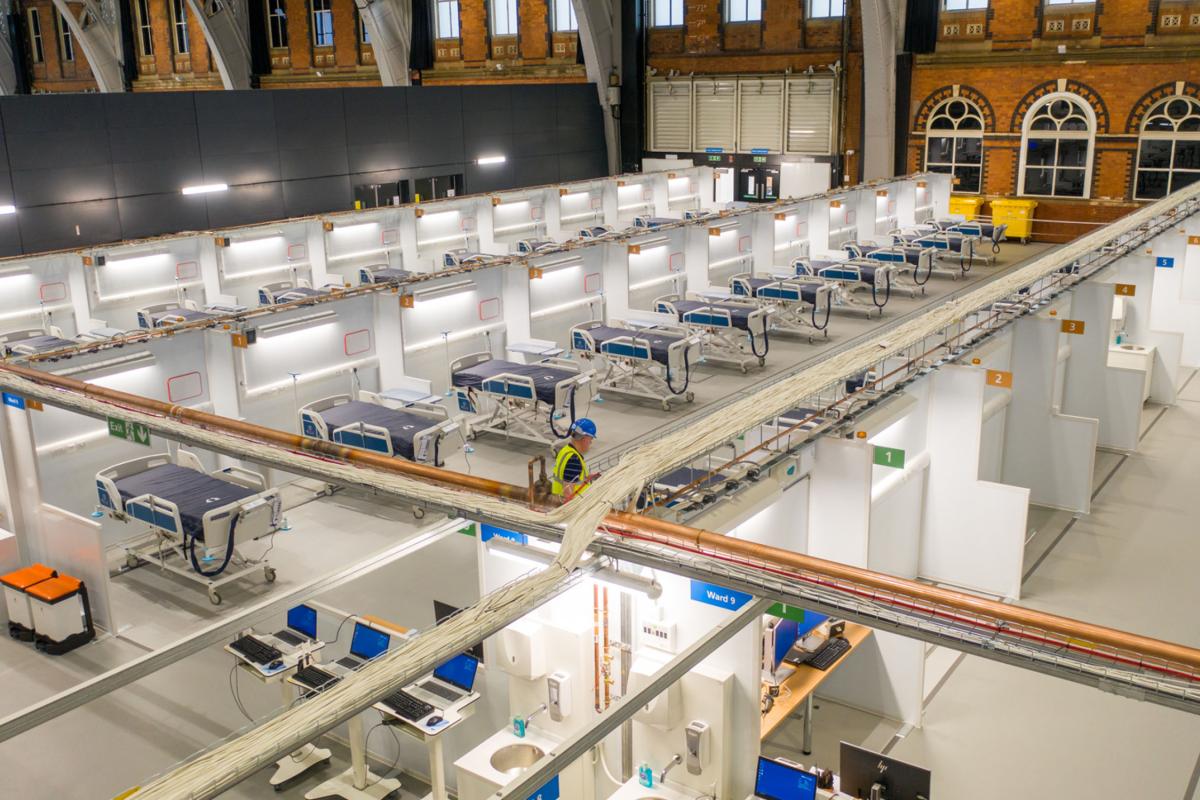Ahead of our Brave Get Together this 4 November we caught up with Ged Couser and James Hepburn, the men behind the NHS Nightingale Hospitals.
The nine day wonder of the Nightingale Hospital has been a beacon of light during tough times. What did you learn about innovation in a crisis?
We have been drawing on our previous experience of designing large scale healthcare facilities including very large ICUs in super speciality tertiary hospitals like QE Hospital, Birmingham.
To be able to build the facility safely and at speed requires a clarity of conceptual thinking and planning with a rigorous approach to procurement and construction. The intention was to share these key principles and lessons with those delivering similar emergency healthcare projects.
We found that solutions had to be flexible, rapid to construct and take into account procurement channels to be able to deliver this volume of equipped beds within such a short timeframe. It also relied on teams making immediate decisions to allow construction to progress in parallel with design.
Minimal building intervention is also essential to ensure rapid project delivery, so it is vital that building assets were used to the maximum. Also, the experience of the healthcare architecture team and their understanding of clinical flows allowed logical repurposing spaces with minimal new construction.
And, what did you learn about effective collaboration and teamwork?
Everybody just mucked in – if a gap was identified, someone tried to fill it. Different work streams were under pressure at different times because of procurement pressure or construction demands.
With everyone working flat out over long days, if you could see someone had too much on their plate, you just helped them out.
Boundaries between professions vanished and people stepped in to help wherever it was needed. A reporting structure was set up and different people took up leadership of different workstreams. We were the space planning lead.
The speed of the project was insane. Decisions had to be made quickly to allow construction to progress. Design proposals had to be sufficiently flexible to accommodate the developing design of specialist systems such as for the medical gases.
With such a short programme, procurement was an issue and, where possible, we made the most of the centre’s infrastructure and temporary systems, designed around what could be sourced and implemented within the very short amount of time available.
Another issue has been providing resilience to the electrical power to the building. This has involved the addition of uninterruptible power supply (UPS) and LV standby generators to supplement the existing infrastructure.
The most significant step change in the collaborative approach, to deliver the project in the almost impossible timescale, was that each and every problem was shared across all professions and disciplines which removed constraints in the process of reaching solutions. It was a ‘well if I changed this it will allow you to do that’ approach which was happening every day all over the project creating an almost exhilarating collaborative culture, I have never witnessed before in any context.
Tickets for our Brave Get Together on 4 November, our biggest event of the year, are on sale now - for members and non-members alike. Head here to see the full speaker line-up and buy yours today.



